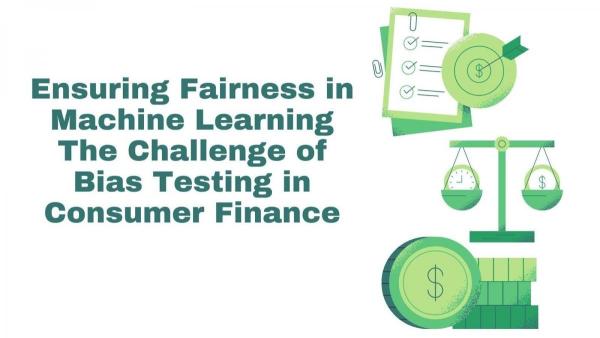
In the rapidly evolving world of consumer finance, machine learning (ML) models are transforming the way financial decisions are made. From credit scoring to fraud detection, these algorithms are becoming indispensable in shaping the financial landscape. Pavan Rupanguntla explores these challenges, offering a framework for bias testing that ensures fairness and compliance.
The Rise of Machine Learning in Financial Decision-Making
Machine learning has revolutionized consumer finance, allowing institutions to make faster and more accurate decisions. These models are particularly effective in risk assessment and fraud detection, leveraging vast amounts of data to identify patterns that may go unnoticed. However, this transformation is not without its pitfalls. As these models become more integral to financial services, ensuring they are free from bias becomes crucial. If left unchecked, biased algorithms could reinforce existing inequalities in credit and loan allocation.
The Complex Landscape of Regulation and Compliance
With the increasing use of AI in finance, regulatory bodies are intensifying their scrutiny. Financial institutions are required to adhere to regulations such as the Fair Credit Reporting Act and the Equal Credit Opportunity Act to ensure algorithms do not unfairly discriminate. Over 67% of financial institutions report regulatory compliance as their primary concern when deploying ML models. The difficulty lies not only in developing effective models but in ensuring these algorithms can be explained to regulators.
Unveiling the Hidden Bias: The Role of Proxy Variables
Bias in ML models often arises from seemingly neutral variables that, when combined, unintentionally discriminate against certain groups. These are known as proxy variables—indirect indicators that can predict sensitive characteristics such as race, gender, or age, even when not explicitly included in the model. Identifying these proxy relationships is critical in ensuring fairness. Modern statistical tools, such as SHAP values and counterfactual analysis, are employed to detect these biases. However, detecting proxy bias requires large datasets and advanced techniques.
Real-Time Monitoring for Continuous Improvement
One of the critical elements of maintaining fairness in ML systems is the implementation of continuous monitoring frameworks. These systems are designed to identify and address bias in real-time, rather than relying on periodic audits. By processing millions of transactions daily, real-time monitoring systems can detect bias issues much faster—often within 48 hours. The development of sophisticated monitoring infrastructure, coupled with automated alerting systems, allows institutions to respond to potential fairness issues before they escalate.
Mitigating Bias Through Model and Data Design
Bias mitigation in ML models is not just about identifying issues—it’s also about addressing them. One of the most effective ways to reduce bias is through architectural changes, such as using debiased embeddings or fairness-aware neural networks. These techniques have been shown to significantly reduce demographic disparities while maintaining model accuracy. Data-centric approaches, such as balanced sampling and feature transformation, can also improve fairness before the model training process begins.
A Comprehensive Approach to Governance
Finally, robust governance frameworks are essential for ensuring that bias testing and mitigation strategies are consistently applied across all models. Financial institutions with strong governance structures experience better outcomes in terms of compliance and model performance. These frameworks require cross-functional collaboration, involving legal, risk, and data science teams working together to monitor biases.
In conclusion, as machine learning continues to redefine the consumer finance industry, ensuring fairness and transparency in automated decision-making is crucial. Through the development of sophisticated bias testing and mitigation frameworks, financial institutions can uphold ethical standards, promote fairness, and meet regulatory requirements. Pavan Rupanguntla's framework offers valuable insights into the evolving field of responsible AI in finance. Moving forward, maintaining trust and ensuring equitable access to financial services will depend on the ongoing refinement of these strategies.